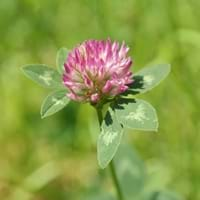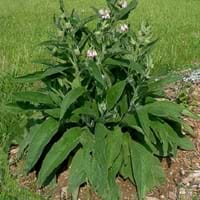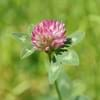Life Span
Biennial and Perennial
Perennial
Type
Flowering Plants, Herbs
Broadleaf Evergreen
Origin
Europe, Northern Africa, Western Asia
Europe, Russia
Types
Not Available
Symphytum officinale (common comfrey), Symphytum asperum (rough comfrey)
Number of Varieties
Not Available
Habitat
Warmer regions
Cold Regions, stream banks
USDA Hardiness Zone
4-5
6-11
AHS Heat Zone
Not Available
Not Available
Sunset Zone
Not Available
21,22
Habit
Upright/Erect
Upright/Erect
Flower Color
Pink
White, Light Pink
Flower Color Modifier
Not Available
Bicolor
Fruit Color
Not Available
Not Available, Orange Red
Leaf Color in Spring
Green, Dark Green
Red, Green, Copper
Leaf Color in Summer
Green, Dark Green
Green, Blue Green
Leaf Color in Fall
Green, Dark Green
Green, Blue Green
Leaf Color in Winter
Green, Dark Green
Red, Dark Green, Burgundy, Bronze
Plant Season
Spring, Summer, Fall, Winter
Spring, Summer, Fall, Winter
Sunlight
Full Sun
Full Sun, Partial Sun, Partial shade
Growth Rate
Medium
Medium
Type of Soil
Sand
Loam, Sand
The pH of Soil
Neutral
Acidic, Neutral
Soil Drainage
Well drained
Well drained
Bloom Time
Late Spring, Early Summer
Late Spring, Early Summer, Summer
Tolerances
Drought
Not Available
Where to Plant?
Container, Ground
Container, Ground
How to Plant?
Seedlings
Root Division, Transplanting
Plant Maintenance
Medium
Low
Watering Requirements
Average Water Needs, Never Over-water
Allow to dry out slightly between watering, Water daily during growing season
In Summer
Lots of watering
Lots of watering
In Spring
Moderate
Moderate
In Winter
Average Water
Average Water
Soil pH
Neutral
Acidic, Neutral
Soil Type
Sand
Loam, Sand
Soil Drainage Capacity
Well drained
Well drained
Sun Exposure
Full Sun
Full Sun, Partial Sun, Partial shade
Pruning
Remove damaged leaves, Remove dead branches, Remove dead leaves
Cut or pinch the stems, Remove dead leaves
Fertilizers
All-Purpose Liquid Fertilizer
14-14-14 Fertilizer, All-Purpose Liquid Fertilizer, can go long without fertilizers
Pests and Diseases
Borers, Red blotch, Root weevil
Aphids, Stem spot
Plant Tolerance
Drought
Shallow soil, Sun
Flower Petal Number
Single
Single
Foliage Texture
Bold
Medium
Foliage Sheen
Matte
Glossy
Attracts
Bumblebees, Butterflies
Ants, Butterflies, pollinators
Allergy
allergic reaction, Headache, Liver disease, Nausea
Antibacterial, Peripheral Edema
Aesthetic Uses
Beautification, Showy Purposes
Cottage Garden, Showy Purposes
Beauty Benefits
Anti-ageing, Good for skin and hair, Promotes healthy skin
Acne, Beautiful Skin, Reduce Bruises, Remove blemishes
Environmental Uses
Air purification
Air purification, Fixes Nitrogen
Medicinal Uses
Antispasmodic, Cough, Expectorant, Sedative
Asthma, Diarrhea, Obesity, Osteoarthritis
Part of Plant Used
Flowers, Leaves, Stem
Leaves, Twigs
Other Uses
Food for animals, Traditional medicine, Used as Ornamental plant, Used for its medicinal properties, Used to make herbal teas
Used for its medicinal properties
Used As Indoor Plant
Yes
No
Used As Outdoor Plant
Yes
Yes
Garden Design
Container, Houseplant, Mixed Border, Rock Garden, Wall
Container, Feature Plant, Foundation, Groundcover, Hedges, Mixed Border, Tropical
Botanical Name
Trifolium pratense
Symphytum asperum
Common Name
Red Clover
Comfrey,Black Root, Blackwort, Bruisewort
In Hindi
लाल तिपतिया घास
Blackwort
In German
Rotklee
Blackwort
In French
Trèfle rouge
Blackwort
In Spanish
Trébol rojo
Blackwort
In Greek
Κόκκινο τριφύλλι
Blackwort
In Portuguese
Trevo vermelho
Blackwort
In Polish
Czerwona koniczyna
Blackwort
In Latin
Trifolium pratense
Blackwort
Phylum
Magnoliophyta
Magnoliophyta
Class
Magnoliopsida
Magnoliopsida
Family
Fabaceae
Boraginaceae
Genus
Trifolium
Symphytum
Clade
Angiosperms, Eudicots, Rosids
Angiosperms, Eudicots, Rosids
Tribe
Trifolieae
Not Available
Subfamily
Faboideae
Boraginoideae
Number of Species
Not Available
Importance of Red Clover and Comfrey
Want to have the most appropriate plant for your garden? You might want to know the importance of Red Clover and Comfrey. Basically, these two plants vary in many aspects. Compare Red Clover and Comfrey as they differ in many characteristics such as their life, care, benefits, facts, etc. Every gardener must at least have the slightest clue about the plants he wants to plant in his garden. Compare their benefits, which differ in many ways like facts and uses. The medicinal use of Red Clover is Antispasmodic, Cough, Expectorant and Sedative whereas of Comfrey is Asthma, Diarrhea, Obesity and Osteoarthritis. Red Clover has beauty benefits as follows: Anti-ageing, Good for skin and hair and Promotes healthy skin while Comfrey has beauty benefits as follows: Anti-ageing, Good for skin and hair and Promotes healthy skin.
Compare Facts of Red Clover vs Comfrey
How to choose the best garden plant for your garden depending upon its facts? Here garden plant comparison will help you to solve this query. Compare the facts of Red Clover vs Comfrey and know which one to choose. As garden plants have benefits and other uses, allergy is also a major drawback of plants for some people. Allergic reactions of Red Clover are allergic reaction, Headache, Liver disease and Nausea whereas of Comfrey have Antibacterial and Peripheral Edema respectively. Having a fruit bearing plant in your garden can be a plus point of your garden. Red Clover has no showy fruits and Comfrey has showy fruits. Also Red Clover is not flowering and Comfrey is not flowering . You can compare Red Clover and Comfrey facts and facts of other plants too.





